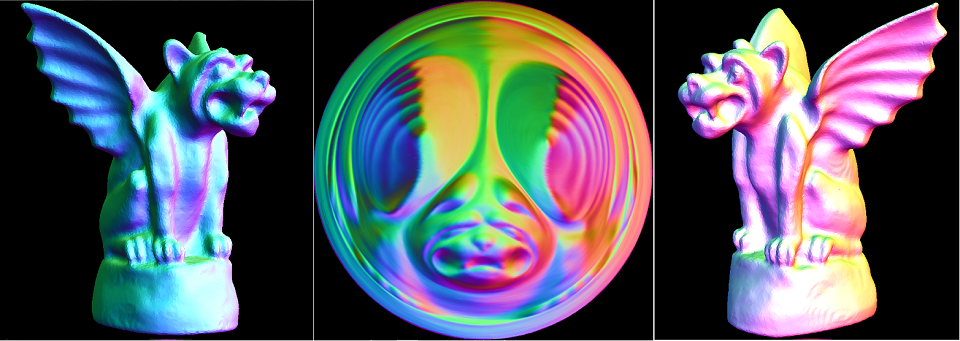

The courses focused on the fundamental theories and computational algorithms for optimal transportation, Monge-Ampere equation and convex geometry. The topics include Monge-Kantorovich prime, dual problem, Brenier theory; Monge-Ampere equation theory, including existence, uniqueness, regularity and stability; Alelxandrov convex geometry, Brunn-Minkowski inequality, Alexandrov mapping lemma, Minkowski problem; computational algorithms, including direct numerical methods for solving Monge-Ampere equation, Oliker-Prussner algorithm, variational method; applications, including parameterization in graphics, registration in vision, shape comparision in medical imaging and generative models in deep learning.
The lecture notes are available upon request. The textbook based on the lectures will be published in 2021. Please forward your comments and criticisms to gu@cs.stonybrook.edu.

This lecture introduces the classical Monge problem and its relaxation, Kantorovich problem, proves the existence of the solution to Kantorovich problem.
2. Kantorovich Dual problem
This lecture introduces the dual formulation of the optimal transport problem, c-transform.
3. Brenier Theory
This lecture proves Brenier theory, Legendre-Fenchel transformation.
4. Cyclic monotone condition
This lecture introduces the cyclic monotone condition, and proves the equivalence between the Kantorovich problem and the dual problem formulation.
5. Polar decomposition
This lecture introduces Brenier's polar decomposition theorem.
6. Alexandrov Mapping Lemma
This lecture introduce Spenere lemma, Brouwer fixed point theorem, domain invariance and Alexandrov mapping lemma.
7. Brunn-Minkowski inequality
This lecture explains Brunn-Minkowski inequality, Isoperimetric inequality.
8. Minkowski problem
This lecture focuses on the Minkowski problems with prescribed curvatures.
9. Convex function and Alexandrov Theorem
This lecture introduce Alexandrov regularity theorem for convex functions.
10. Existence of Alexandrov solution to Monge-Ampere equation
This lecture proves the existence of Alexandrov solution to Monge-Ampere equation.
11. Uniqueness of Alexandrov solution to Monge-Ampere equation
This lecture proves the uniqueness and stability of Alexandrov solution to Monge-Ampere equation.
12. Regularity of Alexandrov solution to Monge-Ampere equation
This lecture introduces the regularity of the solution to Monge-Ampere equation.
13. Computational geometric algorithms
Convex hull, upper envelope, Delaunay Refinement algorithms.
14. Numerical algorithms to solve Monge-Ampere equation
Explicit, semi-implicit solution methods, linearization of Monge-Ampere operator.
15.Oliker-Prussner method
Oliker-Prussner method for solving Monge-Ampere equation with Dirichlet condition.
16.Semi-discrete optimal transportation
Semi-discrete optimal transportation theorem and algorithm.
17.Variational Principles
Variational princple for semi-discrete optimal transportation.
18.Spherical Optimal transportation
Spherical optimal transportation algorithm.
19.Optimal transportation in Optics
Optimal transportation theory in optics.
20.Optimal transportation in Optics Algorithms
Optimal transportation algorithms in optics.
Optimal transportation for generative models in deep learning
This lecture focuses on the fundamental concepts and algorithms generative models in deep learning and the applications of optimal transport in generative model, including manifold distribution principle, manifold structure, autoencoder, Wasserstein distance, mode collapse and regularity of solutions to Monge-Ampere equation.
a. Area-preserving surface parameterization
This lecture introduces area-preserving surface parameterization algorithms.
b. Volume-preserving solid parameterization
This lecture introduces volume-preserving solid parameterization algorithms.
c. Registration
This lecture introduces surface registration based on optimal transportation.
d. Medical imaging